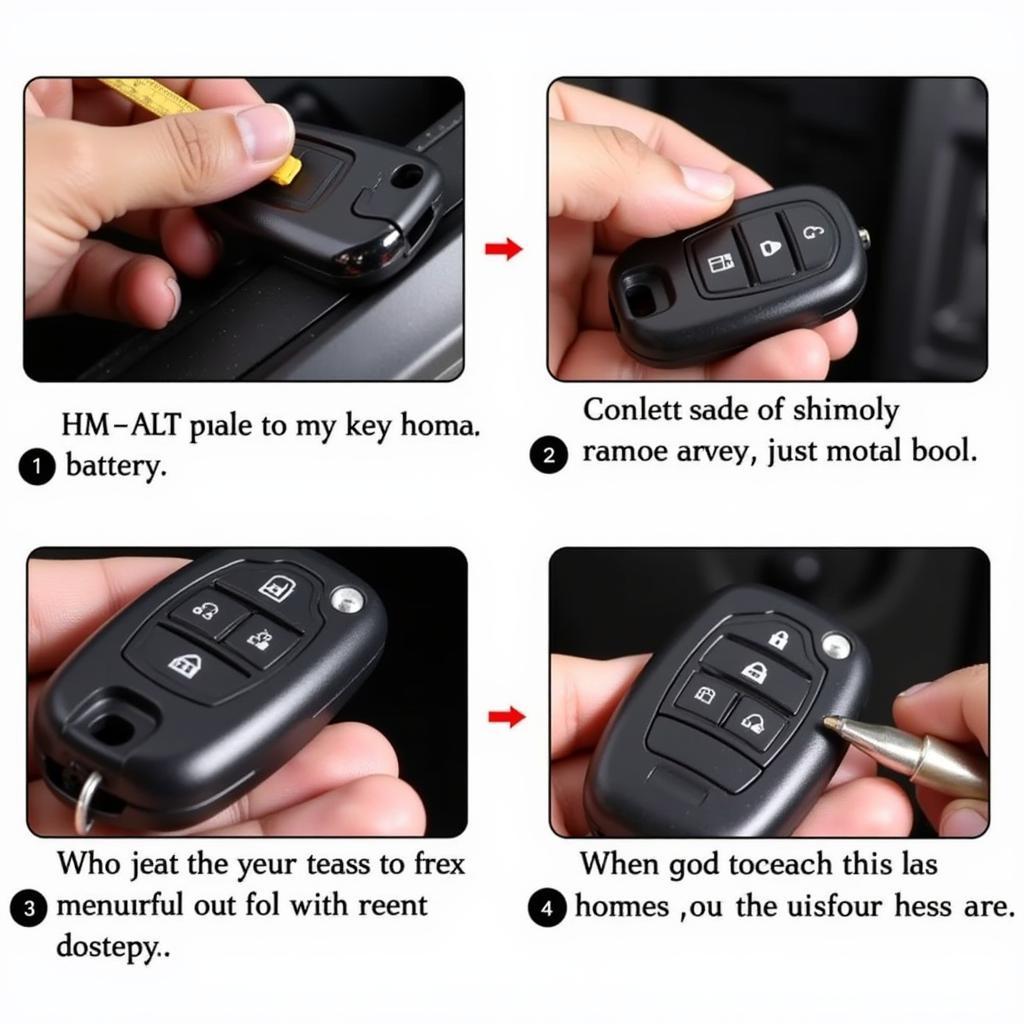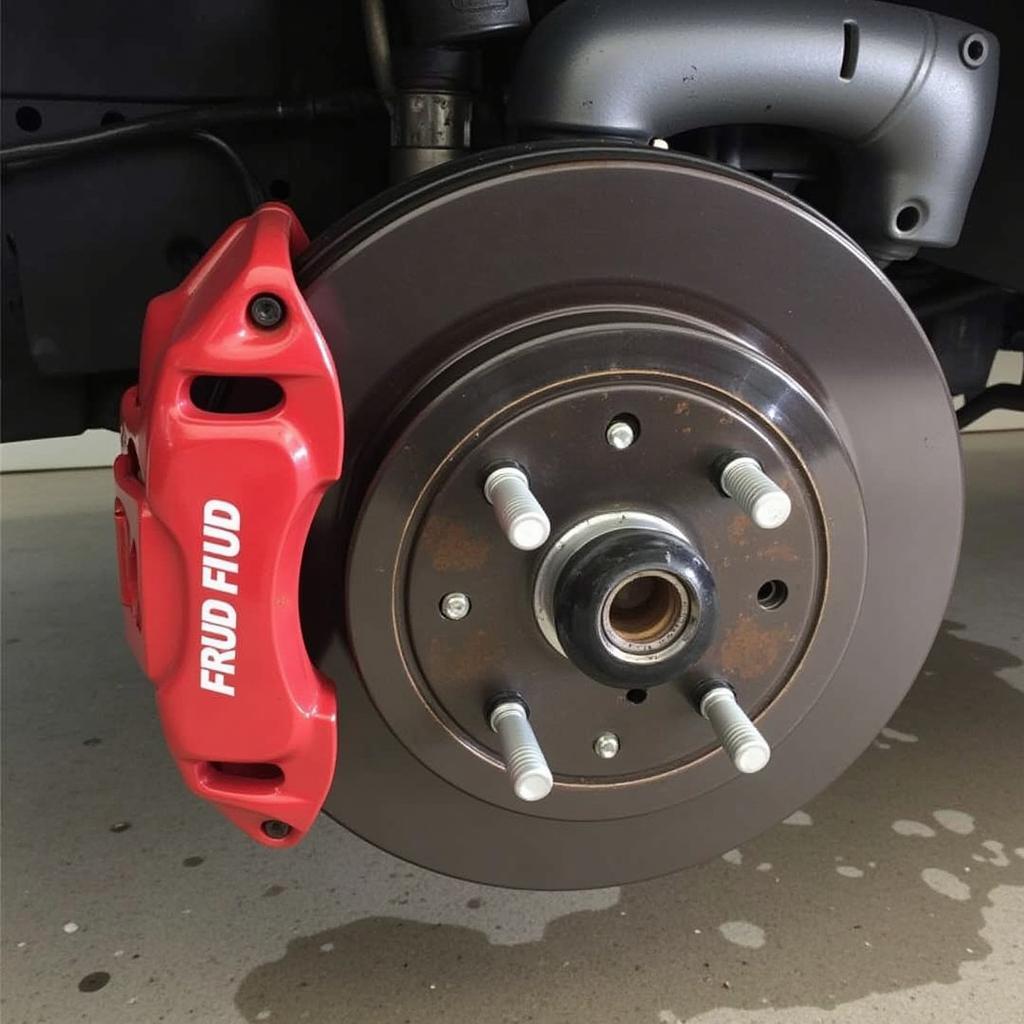The Acura brake lamp warning light is a crucial safety feature, alerting you to potential issues with your braking system. Ignoring this warning can lead to dangerous driving conditions and costly repairs. This comprehensive guide will delve into the common causes of an illuminated Acura brake lamp warning light, providing you with the knowledge to diagnose and potentially resolve the problem.
If your Acura’s brake lamp warning light is on, it indicates a potential problem with your braking system and shouldn’t be ignored. Check your brake fluid level immediately as this is the most common cause. For more complex issues like faulty sensors or wiring, professional diagnosis is recommended. You can find more information about brake lamp issues in certain Acura models at brake lamp warning light acura tl.
Understanding the Acura Brake Lamp Warning Light
The brake lamp warning light is designed to illuminate when the car’s onboard computer detects a fault within the braking system. This could range from a simple issue like a burnt-out bulb to more complex problems like a malfunctioning ABS system. Understanding the potential causes can save you time and money.
Common Causes of an Illuminated Acura Brake Lamp Warning Light
Several factors can trigger the Acura brake lamp warning light. Let’s explore some of the most common culprits:
- Burnt-out Brake Light Bulbs: This is often the easiest fix. Inspect all your brake lights, including the high-mounted stop lamp.
- Low Brake Fluid: Low brake fluid is a serious issue and often indicates a leak in the braking system. Check your brake fluid reservoir and top it off if necessary. If the fluid level remains low, seek professional help to locate and repair the leak.
- Faulty Brake Light Switch: The brake light switch activates the brake lights when you press the brake pedal. A malfunctioning switch can prevent the lights from illuminating or cause them to stay on constantly.
- Blown Fuse: A blown fuse in the brake light circuit can also cause the warning light to illuminate. Check your owner’s manual for the location of the brake light fuse.
- Wiring Problems: Damaged or corroded wiring in the brake light circuit can also be a culprit.
- ABS Issues: In some cases, a problem with the Anti-lock Braking System (ABS) can trigger the brake lamp warning light. This usually requires professional diagnosis.
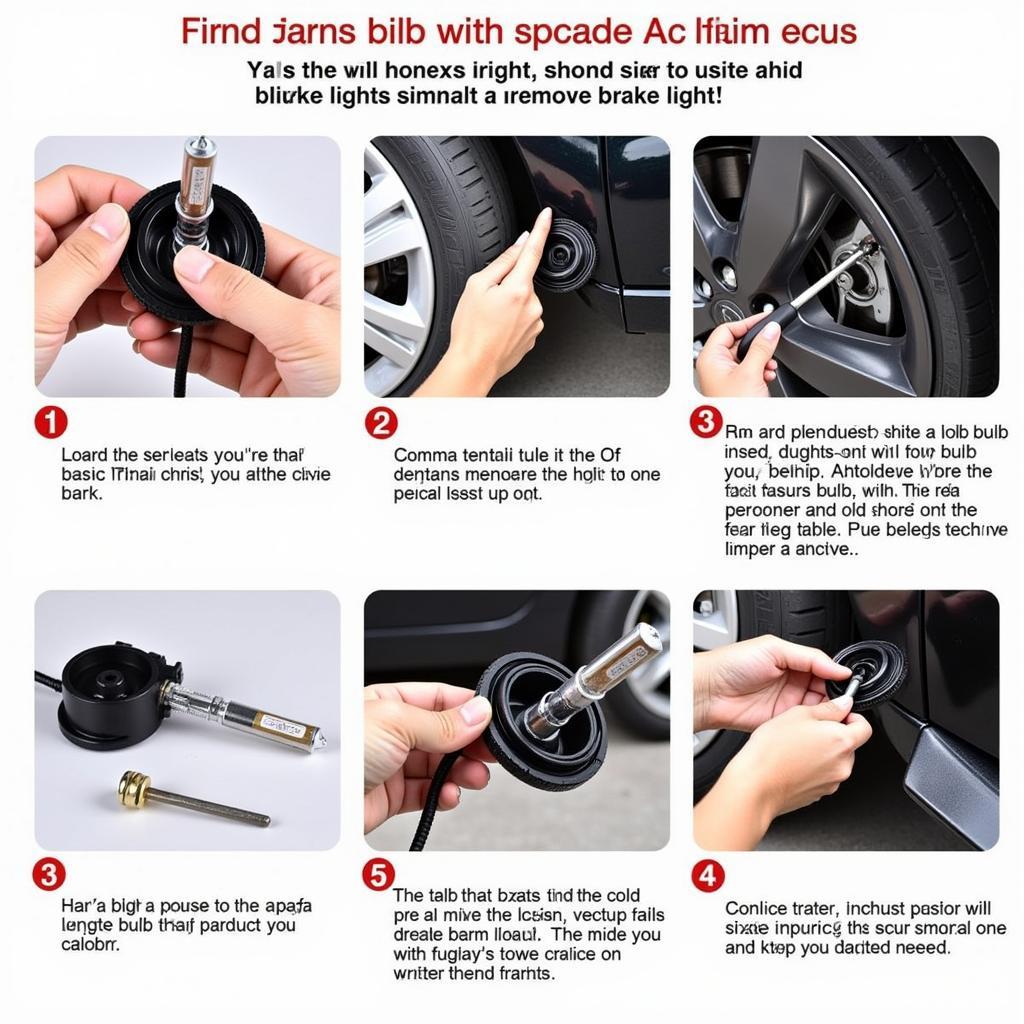 Replacing an Acura Brake Light Bulb
Replacing an Acura Brake Light Bulb
Diagnosing the Problem
Diagnosing the cause of the Acura brake lamp warning light often involves a systematic approach. Start by checking the easiest possibilities first, such as burnt-out bulbs and low brake fluid. If these are not the issue, you may need to consult a professional mechanic with experience in Acura vehicles. You can find helpful resources related to brake light warnings for specific Acura models like the 2002 MDX at brake lamp warning 2002 acura mdx.
Troubleshooting Steps
- Check the Brake Lights: Visually inspect all brake lights, including the high-mounted stop lamp. If a bulb is burnt out, replace it.
- Check the Brake Fluid Level: Open the hood and locate the brake fluid reservoir. Check the fluid level. If it’s low, top it off with the correct type of brake fluid recommended for your Acura model.
- Check the Fuses: Locate the brake light fuse in the fuse box (refer to your owner’s manual). If the fuse is blown, replace it with a fuse of the same amperage.
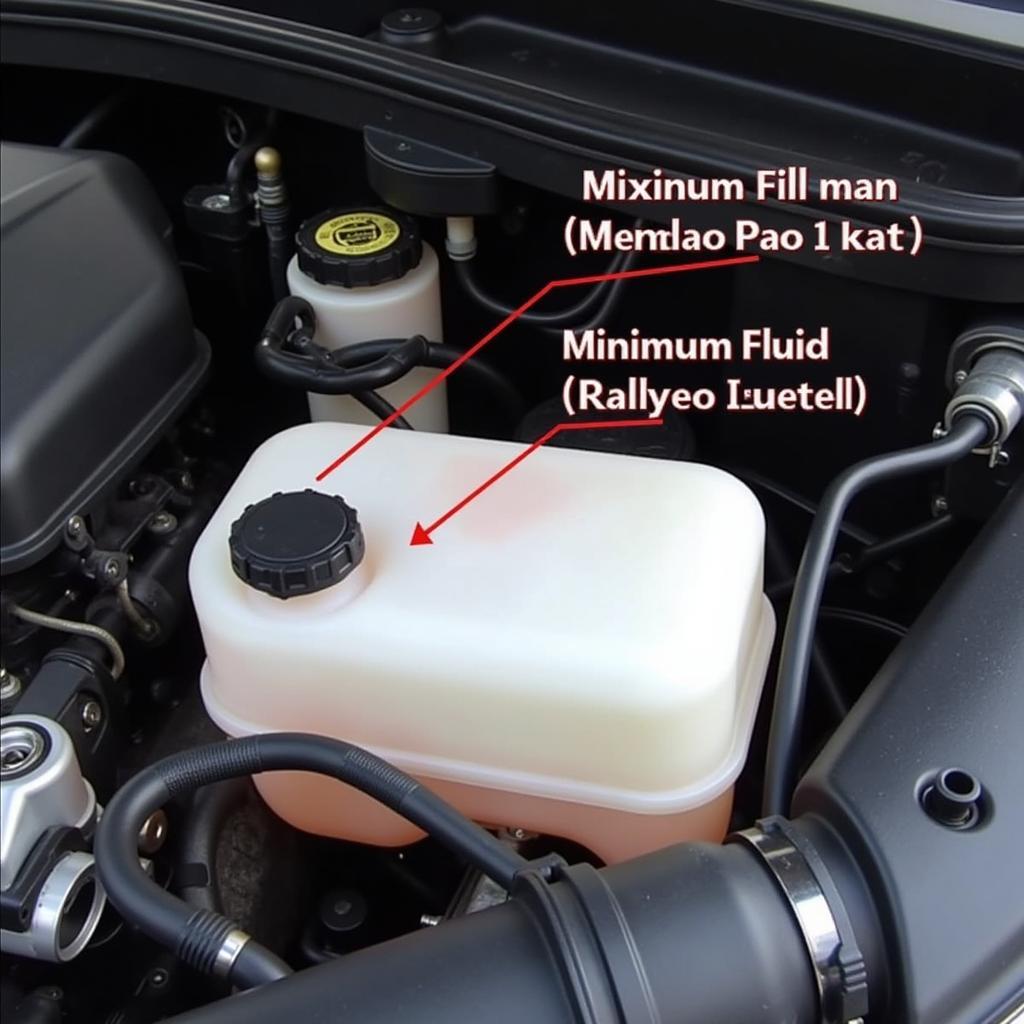 Checking Acura Brake Fluid Level
Checking Acura Brake Fluid Level
Should you encounter a park brake warning light issue, resources like acura tl park brake warning may offer valuable insights. It’s important to address any warning light promptly to ensure safe and optimal vehicle performance.
When to Seek Professional Help
If you’ve checked the bulbs, fluid, and fuses, and the warning light persists, it’s time to seek professional help. A qualified mechanic can diagnose more complex issues, such as a faulty brake light switch, wiring problems, or ABS issues. Remember, ignoring the warning light can lead to more serious and costly problems down the road. You can also find information related to warning citations for brake lights at warning citation for brake light.
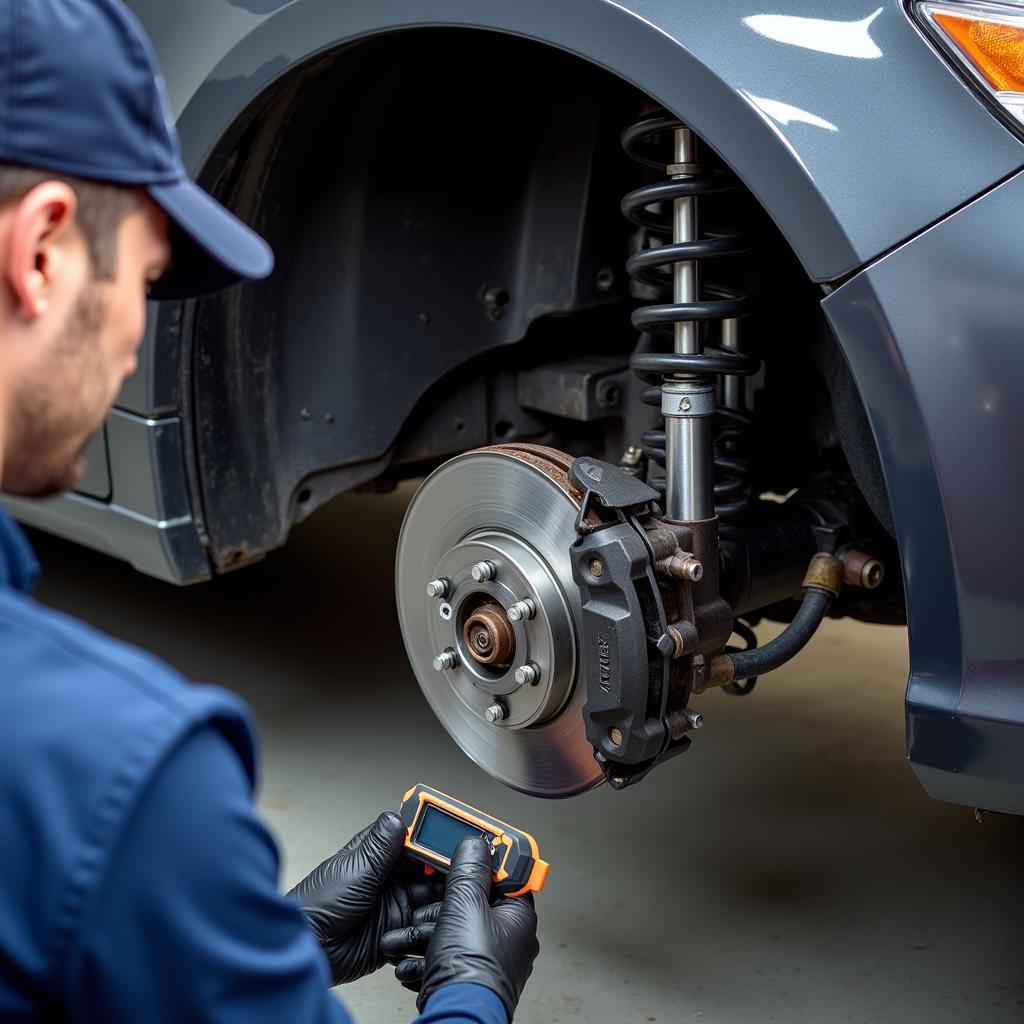 Acura Brake System Inspection by a Mechanic
Acura Brake System Inspection by a Mechanic
“Regular brake inspections are crucial for maintaining safety and preventing costly repairs,” says John Smith, ASE Certified Master Technician. “Addressing warning lights promptly can often prevent minor issues from escalating into major problems.” Another expert, Jane Doe, Automotive Electrical Systems Specialist, adds, “Don’t underestimate the importance of properly functioning brake lights. They are essential for communicating your intentions to other drivers and preventing accidents.”
Conclusion
The Acura brake lamp warning light serves as a vital safety indicator. Addressing the underlying issue promptly ensures your safety and the optimal performance of your Acura. By understanding the common causes and following the troubleshooting steps outlined in this guide, you can often resolve the problem yourself. However, if the issue persists, don’t hesitate to seek professional assistance.
FAQ
- What does the Acura brake lamp warning light mean? It signifies a problem within your braking system, which could range from a burnt-out bulb to a more complex issue.
- Is it safe to drive with the brake lamp warning light on? While you might be able to drive, it’s not recommended. It indicates a potential safety hazard.
- How do I check my brake fluid? Locate the brake fluid reservoir under the hood and check the fluid level against the minimum and maximum markers.
- What if I replace the bulb, and the light stays on? The problem likely lies elsewhere in the braking system, such as the switch, wiring, or ABS. Consult a mechanic.
- How often should I check my brake lights? It’s a good practice to visually inspect your brake lights at least once a month.
- Can I replace the brake light switch myself? While possible, it can be complex and requires some mechanical knowledge. Consulting a professional might be a better option.
- What should I do if my Acura brake lamp warning light flashes? This could indicate a more serious problem with the ABS system. Consult a mechanic immediately.


